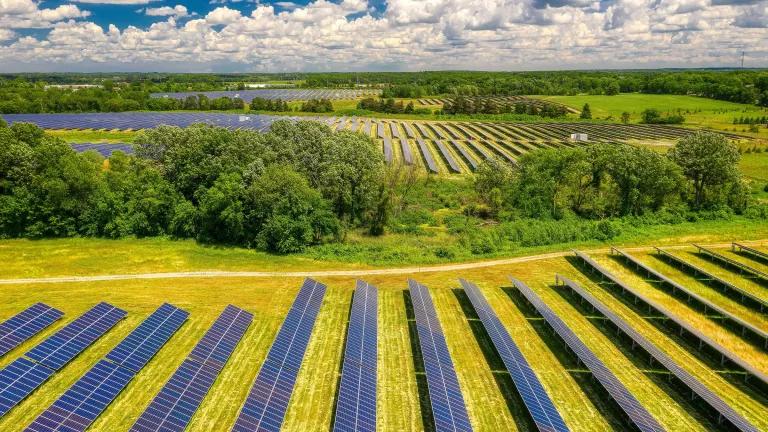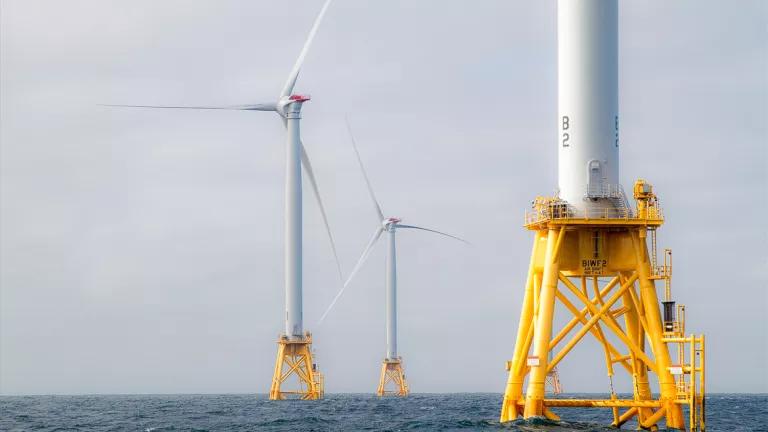Why AGA Gets Electrification Wrong
This blog post was guest written by Joe Kruger.
The American Gas Association (AGA) is out with a report that attempts to contradict the widely-accepted consensus that electrification—the strategic replacement of fossil-fuel burning appliances, vehicles, and industrial equipment with electric versions powered by clean, renewable electricity—will be a key component of climate action. Most experts agree that electrification is a critical strategy for decarbonization. In addition, the National Rural Electric Cooperative and the Regulatory Assistance Project have put forward the concept of “beneficial electrification”, which can serve the public interest by minimizing consumer costs, facilitating a more modern and integrated electric grid, and reducing carbon and conventional air pollution. Despite this growing consensus, AGA argues without basis that electrification of residential services is costly and ineffective for addressing climate change. The AGA’s unrealistic scenario and faulty assumptions are designed to mislead, and serve to discredit the analysis.
AGA’s Electrification Scenario is Extreme and Unrealistic
The AGA report argues that the goal of decarbonization by 2050 is leading some states and cities to push proposals for “policy-driven residential electrification.” The analysis focuses on a fabricated scenario in which by 2020 the federal government bans the sale of new natural gas, oil, and propane space and water heaters by 2023. AGA identifies several jurisdictions where policies affecting residential fuel use have been discussed as part of “a broad range of initiatives and target markets. . .”, but the only policy AGA analyzes is this farfetched concept in which residential buildings are electrified via a national ban on new fossil-fueled heating appliances. This “red herring” is not an approach that any state or local jurisdiction has proposed, nor has it been proposed at the national level.
The numerous real policies and incentives for residential electrification that AGA overlooks include:
- A Lawrence Berkeley National Laboratory (LBNL) report highlighting nine different actions promoting electrification in buildings, ranging from utility incentives for technology deployment to electricity rate design.
- NRDC’s decarbonization study recommends updates to building codes and energy efficiency program designs that would remove regulatory barriers to smart, beneficial electrification.
- A recent Electric Power Research Institute (EPRI) assessment pointed to the benefits of aggressive research & development programs for electric heat pumps and innovative electrified technologies across the U.S. economy, which could lower costs and increase performance of electrified alternatives.
Additionally, AGA looks at the electrification of residential buildings in isolation rather than as a component of an economy-wide decarbonization strategy. For example, both a 2016 U.S. Government report and the NRDC report look at a broad range of strategies and policies that would be phased in over time to reach the 2050 decarbonization goal, such as renewable energy deployment, carbon capture technologies, aggressive efficiency investments, and electrification of transportation and industry. These policies would reduce costs and increase the benefits of an electrification strategy.
Flawed Assumptions Bias Modeling Outcomes
The AGA report has numerous flawed assumptions, including:
- AGA Ignores Energy Efficiency. AGA’s stand-alone residential electrification policy leads to significant new electricity demand, requiring construction of new power plants and transmission infrastructure. This is because AGA’s policy cases assume business-as-usual levels of energy efficiency as projected in the Energy Information Administrations’ (EIA) Annual Energy Outlook AEO 2017. In contrast, most scenarios for decarbonization assume more ambitious energy efficiency programs. EIA assumes that the energy intensity of the U.S. economy (or the energy required to produce a unit of economic value (GDP)) would fall by 1.5% per year, compared with 3.7% per year improvement achieved in NRDC’s Pathways report.
- AGA Overlooks Benefits of Electrification for the Grid. The AGA analysis neglects the dramatic market and regulatory changes the electric power sector is undergoing, which will make electrification of buildings even more beneficial and provide valuable services to our grid. For example, grid enabled water heaters can be used for both demand response and energy storage, mitigating peaks and smoothing electricity demand to reduce grid-stress and the costs of operating our energy systems. These efficient, electric technologies will both reduce energy waste and the costs of a clean energy transition.
- AGA Overestimates Clean Energy Technology Costs. AGA directly adopts EIA’s technology cost projections, but assessments suchas this peer reviewed study have shown that EIA has repeatedly overestimated projected costs for renewable technologies. EIA’s projected costs for solar and wind energy are 30% and 11% higher than what the National Renewable Energy Laboratories (NREL) project in 2020, and about 245% and 140% higher than NREL’s estimates by 2040. Similarly, AGA uses high costs and low efficiencies for electric alternatives for air- and water-heating technologies, compared with recent cost and performance projections from NREL. When these inflated assumptions are coupled with the over-estimation of demand growth and the resulting costs of new capacity required to meet residential electrification needs, AGA’s cost estimates are biased high.
- AGA Uses Unrealistic Timing and Scope for its Policy. AGA’s assumed 2023 ban on all new non-electric space and water heating drives high costs by requiring near-term electrification in all regions and climates. Other analyses include a slower phase in of residential electrification technologies and emphasize deployment first in regions where they are currently cost-effective. The cost-effectiveness and performance of heat pumps is expected to improve over time with innovation in cold weather heat pumps, specifically. Staggered deployment—where heat pumps are installed in warmer regions first and later in colder climates—can greatly improve the cost-effectiveness and impact of electrification.
- AGA Neglects to Assess the Potential Cost Savings from Avoided Natural Gas Infrastructure. The AGA study fails to account for reduced spending on natural gas pipelines as a result of residential building electrification, particularly within cities. As policymakers question the wisdom of locking in fossil fuel infrastructure with the risk of becoming costly stranded assets, electrification will be the smartest option. A recent study concluded that $32 billion worth of proposed gas pipelines may become stranded due to drops in demand for natural gas.
AGA’s Biased Conclusions are Irrelevant
AGA’s indefensible and easily refutable scenario fails to adequately survey the impacts and potential tradeoffs of residential electrification policies. This is unfortunate because there are challenging and important policy, technology, logistical, financial & regulatory issues around electrification that would benefit from more accurate and properly constructed analyses and discussion. AGA has an important role to play on these issues, but the organization diminishes its credibility by putting forward an intentionally bad policy. A comprehensive decarbonization scenario with a realistic demonstration of industry concerns would have facilitated dialogue and debate about the best approaches to beneficial electrification. This is important because beneficial electrification goes beyond the residential sector. It is a critical element of many of the pledges that U.S. states, cities, and businesses have announced towards decarbonizing the economy by adopting a cleaner, more efficient energy system to avoid the worst impacts of climate change.



